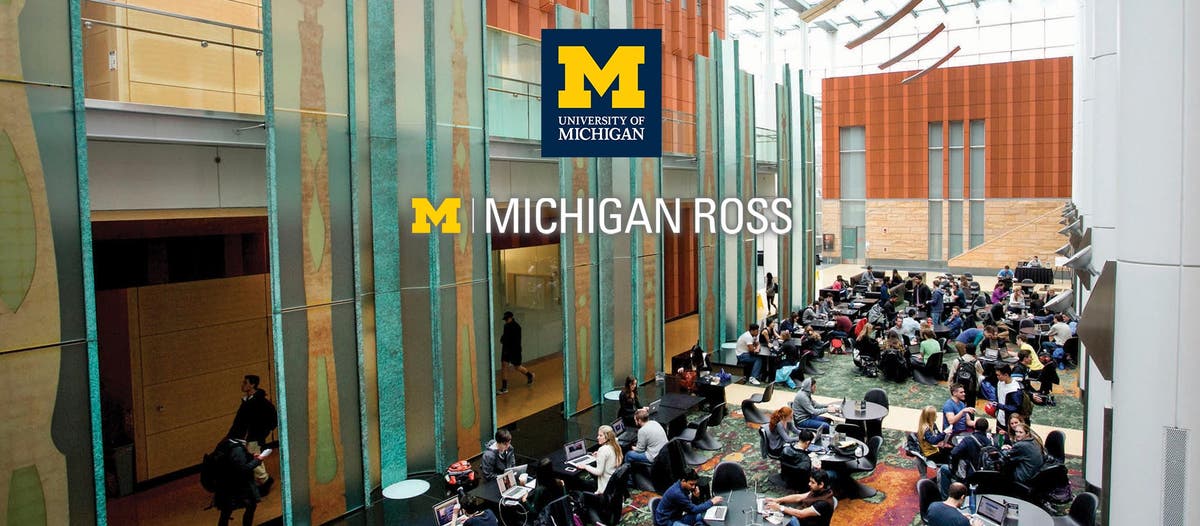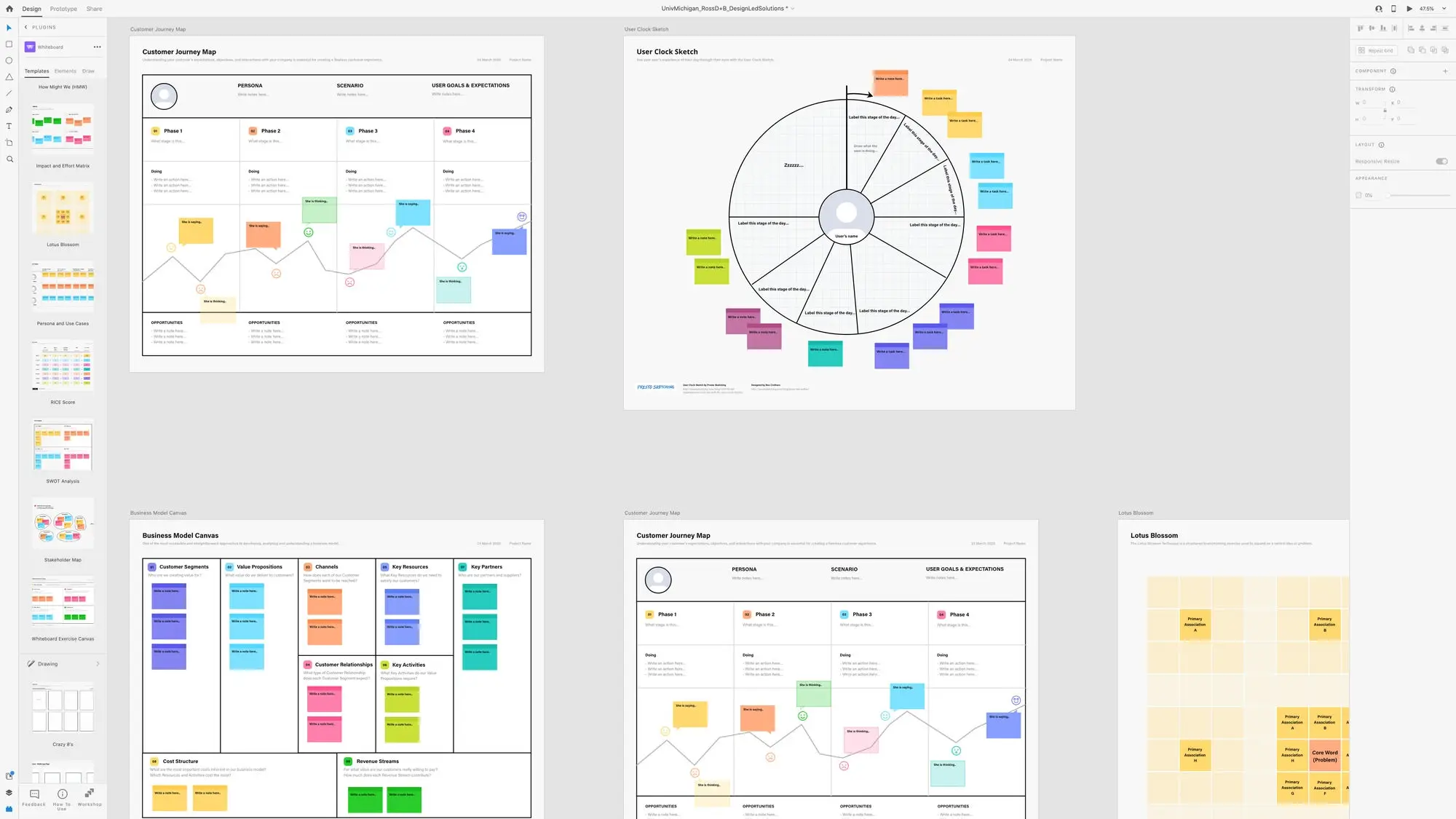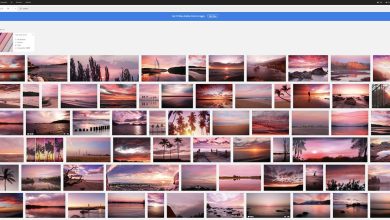How University of Michigan brings human-centric design to business students

You may be surprised to know that some of the confusion we experience while going about our everyday lives might actually be more a result of poor design, and not a fault of our own. For instance, have you ever walked up to a door and given the handle several hard tugs, only to realize that you need to push? While the mistake might make some people feel foolish, design experts argue that it really reflects on the door’s design, not the person using it.
For a long time, businesses looked at design purely through the lens of aesthetics with the goal of creating visually appealing products or brand images that capture consumers’ attention. Things started changing at the end of the 20th century when cognitive scientists began promoting new views of design.
In his seminal 1988 book The Design of Everyday Things, Don Norman advocated for human-centered design that puts a person at the center of every design decision, adding design cues that make a product, service, or process highly intuitive and easy to use. Take the door, for example. Instead of having a handle, which people will instinctively try to pull, why not have a flat or even indented surface?
“As a behavioral scientist, I became very interested in how studies of human behavior — sociology, psychology, and anthropology — can solve everyday business problems,” says Dr. Jeffrey Sanchez-Burks, William Russell Kelly professor of Business Administration at University of Michigan’s Stephen M. Ross School of Business. “I embraced the opportunity to study design and bring insights from both behavioral sciences and design to students at Ross.”
The Ross School of Business has long had a reputation as one of the world’s top business schools and recently ranked among the top ten global schools by US News & World Report. Professor Sanchez-Burks currently uses his background in Social Psychology and Cultural Anthropology to inspire the next generation of business leaders to embrace human-centric design through his work as part of the +Impact Design Studio and as advisor to Design+Business.
Bridging the gap between business and design
Design+Business is a student-run club at Michigan Ross dedicated to promoting human-centered design— including ideation, prototyping, and storytelling — to solve business problems. Founded more than ten years ago by a group of forward-thinking Michigan Ross MBA students, Design+Business collaborates with Sanchez-Burks and the +Impact Design Studio, runs events and workshops for fellow students, and works closely with companies to bring design-centric thinking to real-world business problems.
“Michigan Ross is probably best known for two areas: entrepreneurship and technology,” says Amirah Aziz, recent MBA graduate and outgoing president of Design+Business. “Transformation and innovation are important to Ross grads, which is why understanding human-centric design is vital. People need to learn to be creative, think big, and come up with new ways to solve problems.”
As an Adobe Creative Campus, the University of Michigan supports students’ digital literacy and creative skills development with free access to Adobe Creative Cloud apps. “I didn’t know too much about Adobe apps when I first came to Michigan Ross, but once I started learning more, I was excited,” says Aziz. “There were so many tools that we could use in class, in our club, and in our projects to promote design thinking.”
Incoming Design+Business president Mallory Leibowitz agrees. “Our goal at Design+Business is to challenge people to think about things differently. Having such a wide selection of Adobe apps at our fingertips helps people start experimenting and getting into a creative mindset, which leads to innovation,” explains Leibowitz.
For one Design+Business project, a team of five Michigan Ross MBA students, all from different disciplines, worked with a Fortune 100 technology company to reimagine user journeys and overcome pain points for a popular product. The team wanted to visualize the customer journeys to better brainstorm, iterate on concepts, and collaborate together to add diverse experiences and ideas to the journey.
The team used Adobe XD to collaborate together in one place and lay out their ideas visually, relying heavily on the Modular plugins — a trio of plugins you can install from XD that support the entire creative ideation process from brainstorming to prototyping to pitching presentations. The plugins are Whiteboard (ideate visually, anytime, anywhere), Quick Mockup (design ideas, faster), and Presentation (create easily, present beautifully). The plugins provide a variety of brainstorming and design thinking templates, designed wireframes, high-fidelity app screens, web pages, and presentations slides. The team was able to use the plugins to brainstorm areas of interest, map out customer journeys, and visualize user experiences.
Multiple templates in the Whiteboard plugin.
“The combination of templates and easy-to-use UI of Adobe XD made it easy for us to quickly build out concepts and prototype ideas without spending time adjusting formatting and details,” says Anya Shapiro, incoming Design+Business vice president. “Adobe XD provides us with a great starting point for our brainstorming exercises, aligning on a vision, and helping us visually represent our ideas in ways that resonate with diverse audiences.”
“We don’t want our business grads to be trapped in the ivory tower mindset,” says Sanchez-Burks. “Business leaders need to think about how products and processes affect everyone. By teaching students how to be empathetic and use human-centric design processes, we can help them facilitate innovation while preserving consumer privacy and dignity.”
Learn more about the Modular plugins in the articles below and here.
Source : Adobe









